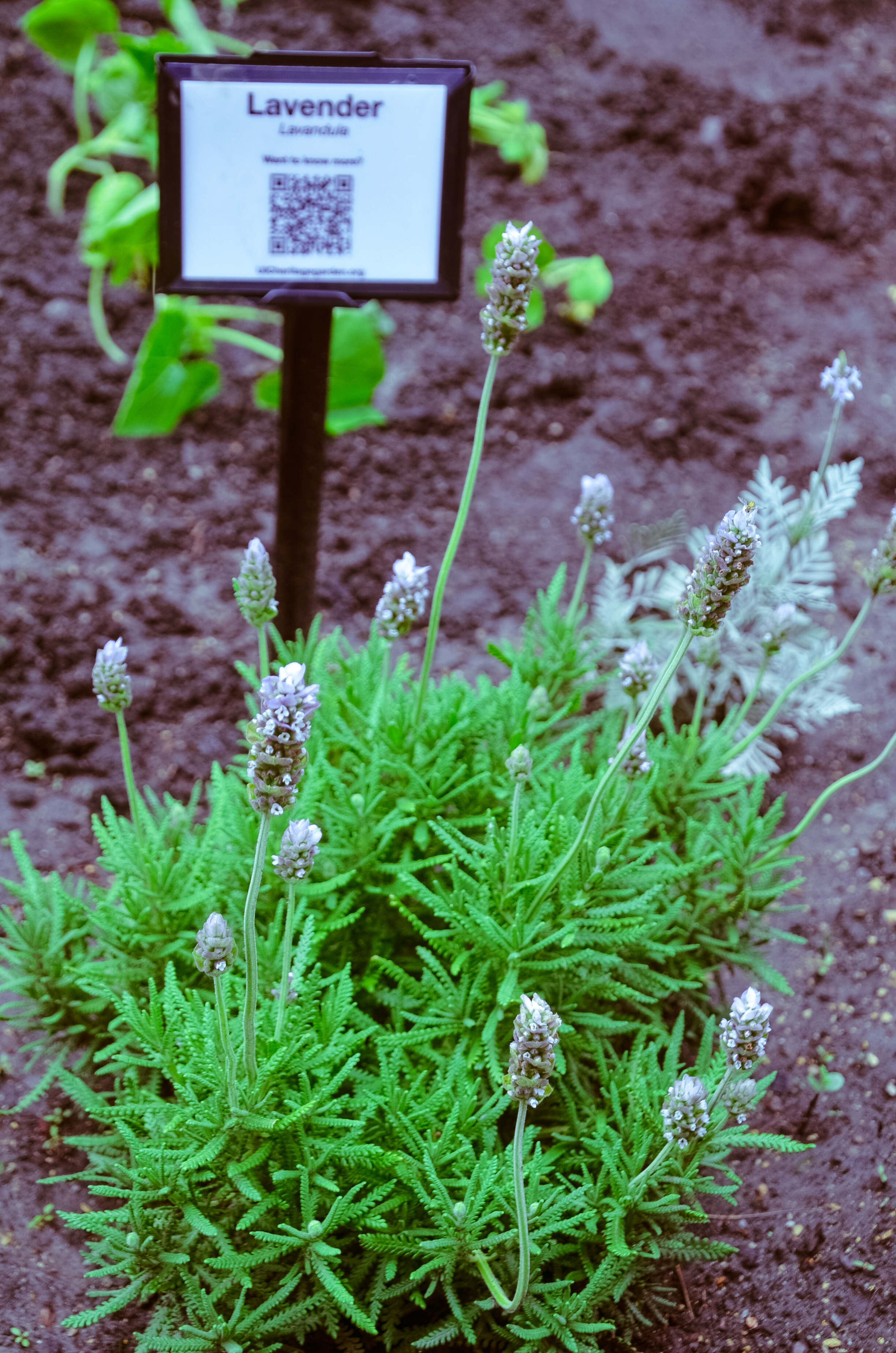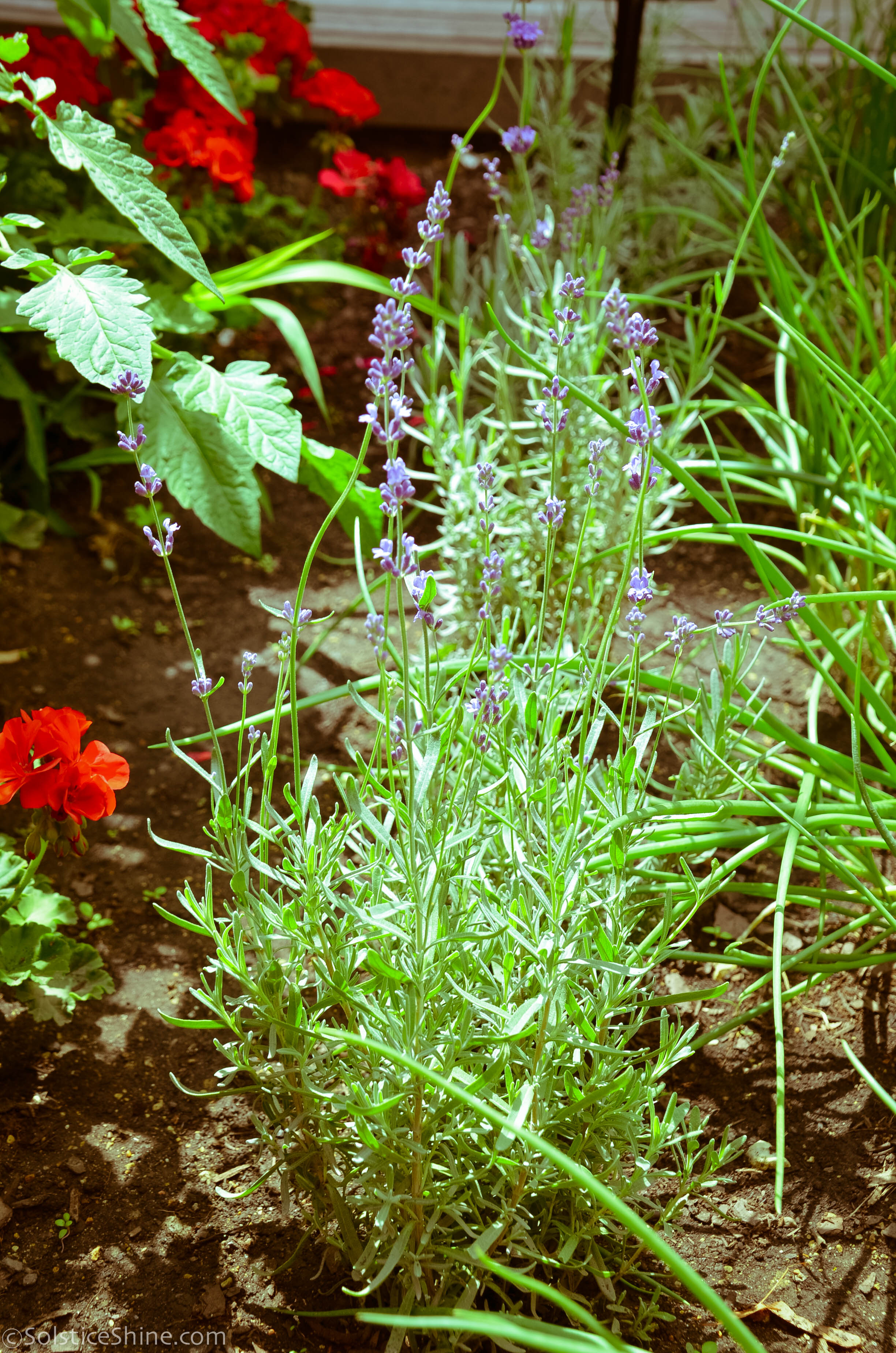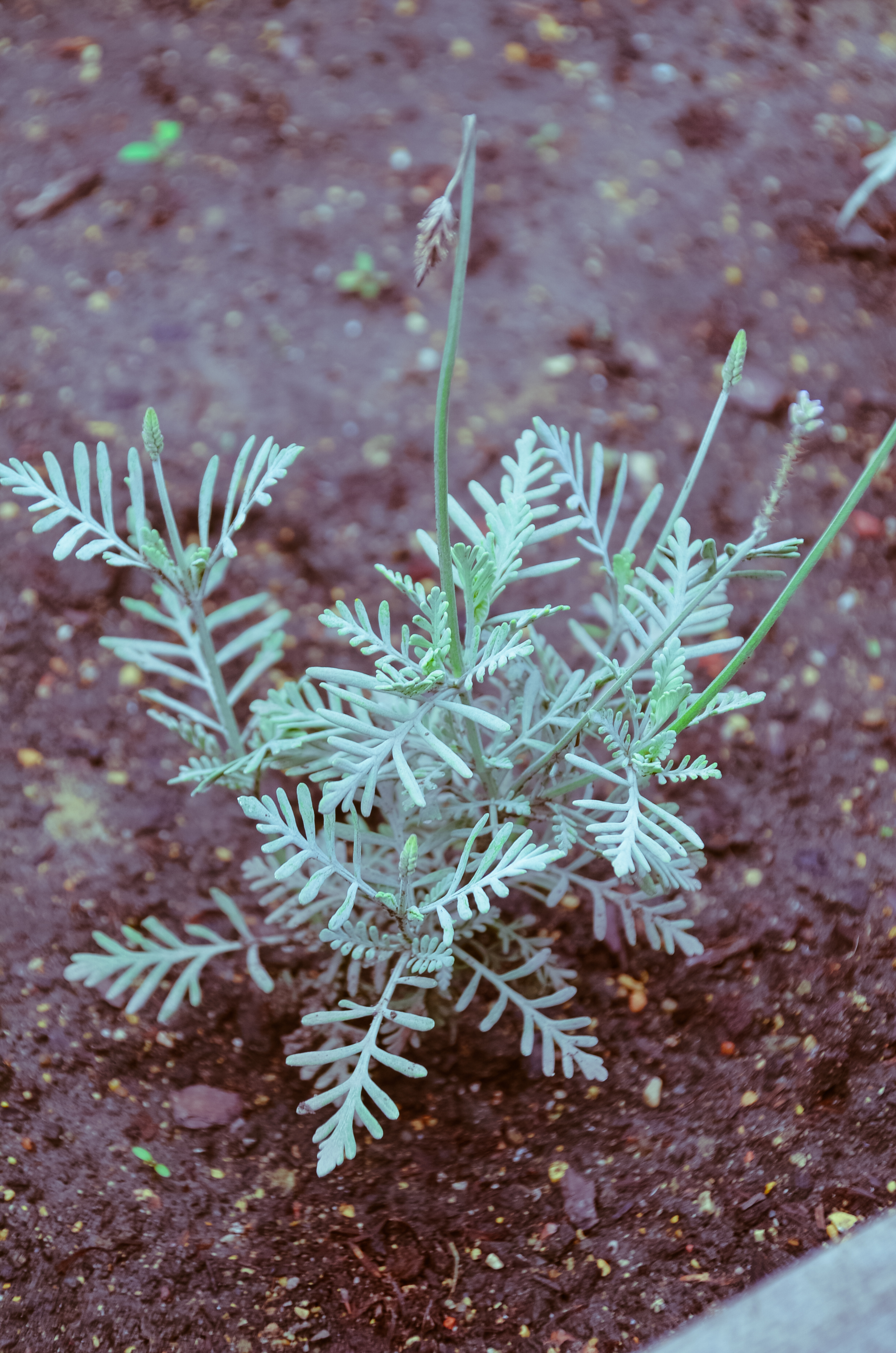Lavender grows best in zones 5-8. The plant can reach 1-3 feet tall and 1-2 feet wide, with deep violet to white colored flowers. Lavender is a low-Maintenance and easy to grow plant. Lavender plants tolerate many growing conditions, but thrive in warm, well-drained soil and lots of sunlight. The plants are very drought resistant once established, but will flower better if not allowed to dry out. Lean soil will encourage a higher concentration of oils. An alkaline and especially chalky soil will enhance lavender fragrance. Lavenders demand full sun, although afternoon shade may be appreciated in the hottest climates. If you add fertilizer the plant will grow more leaves and become less fragrant. Lavender is a woody subshrub, and should be pruned. Do not prune in spring until new growth appears, and leave plants alone for the fall and winter. As the soil warms in spring, mulch around plants with gravel. Plants may be sheared back and shaped after flowering, but do not cut low into old wood. A protective mulch of evergreen boughs may help prevent damage from winter winds in cold climates. In severe climates, cover plants lightly with evergreen boughs to buffer drying winter winds (1). Lavender is a good plant for xeriscaping, because it does not require much water. Lavender is also beneficial for the garden because it attracts non-invasive insects, such as bumble bees, honey bees, butterflies, lady bugs and praying mantises, which then help manage the invasive insect population. The plant is also less prone to pests and diseases than other herbs and vegetables, which can cut down on pesticide and fungicide usage (2).
Culinary and Medicinal Uses
Essential lavender oil has antiseptic and anti-inflammatory properties. It was used in hospitals during WWI to disinfect floors and walls. These extracts are also used as fragrances for bath products. Infusions of lavender soothe and heal insect bites and burns. Bunches of lavender repel insects. If applied to the temples, lavender oil soothes headaches. In pillows, lavender seeds and flowers aid sleep and relaxation. An Infusion of three flowerheads added to a cup of boiling water soothes and relaxes at bedtime. Lavender oil has also been used to heal acne when used diluted 1:10 with water, Rosewater, or witch hazel; it also treats skin burns and inflammatory conditions. Lavender flowers are occasionally blended with black, green, or Herbal tea, adding a fresh, relaxing scent and flavor. Additionally, lavender is classified as an antiemetic, which prevents vomiting. (3, 4) Research on lavender has shown it to be effective in relieving anxiety and pain for hospice patients (5)
Significance to Cultural Communities
Lavender is native to the Middle East and India, with history spanning over 2,500 years ago. In the 7th century, Arabs domesticated the plant and then brought it to Spain. The Spanish then in turn brought the plant to North America (5). Lavender is now a popular herb used in many different cultures around the world. In New Mexico, in the United States, local herbal folk healers, or curanderas, regard lavender as a central remedio. Curandera practices puts emphasis on lavender to assist in childbirth and infancy health. The herb is placed in a brass planter to burn, with the smoke to sooth and relax the mother during childbirth. After the child is born, the mother is then purified with the incense once again. The seeds are given to the babies after being chewed to sooth the baby’s mouth and gums. Lavender is also used to fumigate sick rooms (5). In Mexican cultures, lavender is brewed as a tea and used for indigestion. The plant is also bundled and burned to form smudge sticks, for purifying rooms (6). Lavender is a symbol for Province, France, where it grows in beautifully striking fields. The culture of Province is connected greatly to the plant, both from the farming and production aspect of the plant but also from an artistic perspective. The area has attracted many famous artists to the region because of the beautiful sunshine and of course, the fields of lavender. Van Gogh painted over 200 oil canvases, and Matisse and Picasso also built chapels in the area, leaving dozens of works to the neighboring cities in the region (7).
From the Community Voice
“Lavender is the soul of Province.” - Jean Giono (8)
____________________________
1. “Lavandula angustifolia.” Encylopedia of Life. http://eol.org/pages/486837/details
2. “The Benefits of Low Water-Use Garden Plants for Our Environment.” Eco Habits. http://ecohabits.net/benefits-water-use-garden-plants/#sthash.IeXjMqPy.dpbs
3. “The History of Lavender.” lavenderfarm. http://www.lavenderfarm.com/history.htm
4. Torres, Eliseo “Cheo,” Healing with Herbs and Rituals: A Mexican Tradition (Albuquerque, NM: University of New Mexico Press, 2006).
5. “Lavender’s uses span generations, cultures.” Local iQ, August 8, 2008. http://www.local-iq.com/index.php?Itemid=53&id=1022&option=com_content&task=view
6. Davidow, Joie, Infusions of Healing: A Treasury of Mexican-American Herbal Remedies (New York, NY: Fireside, 1999).
7. “Introducing Provence & the Côte d’Azur.” Lonely Planet. http://www.lonelyplanet.com/france/provence
8. “Lavender in Provence.” The Luberon. http://www.theluberon.com/activities/lavender-provence




